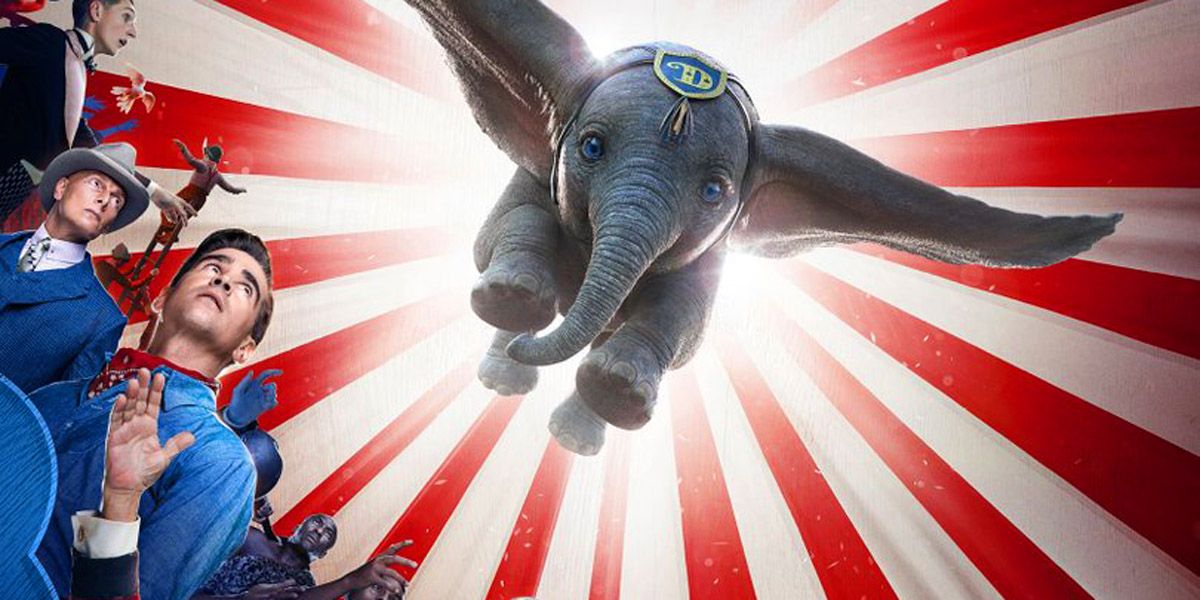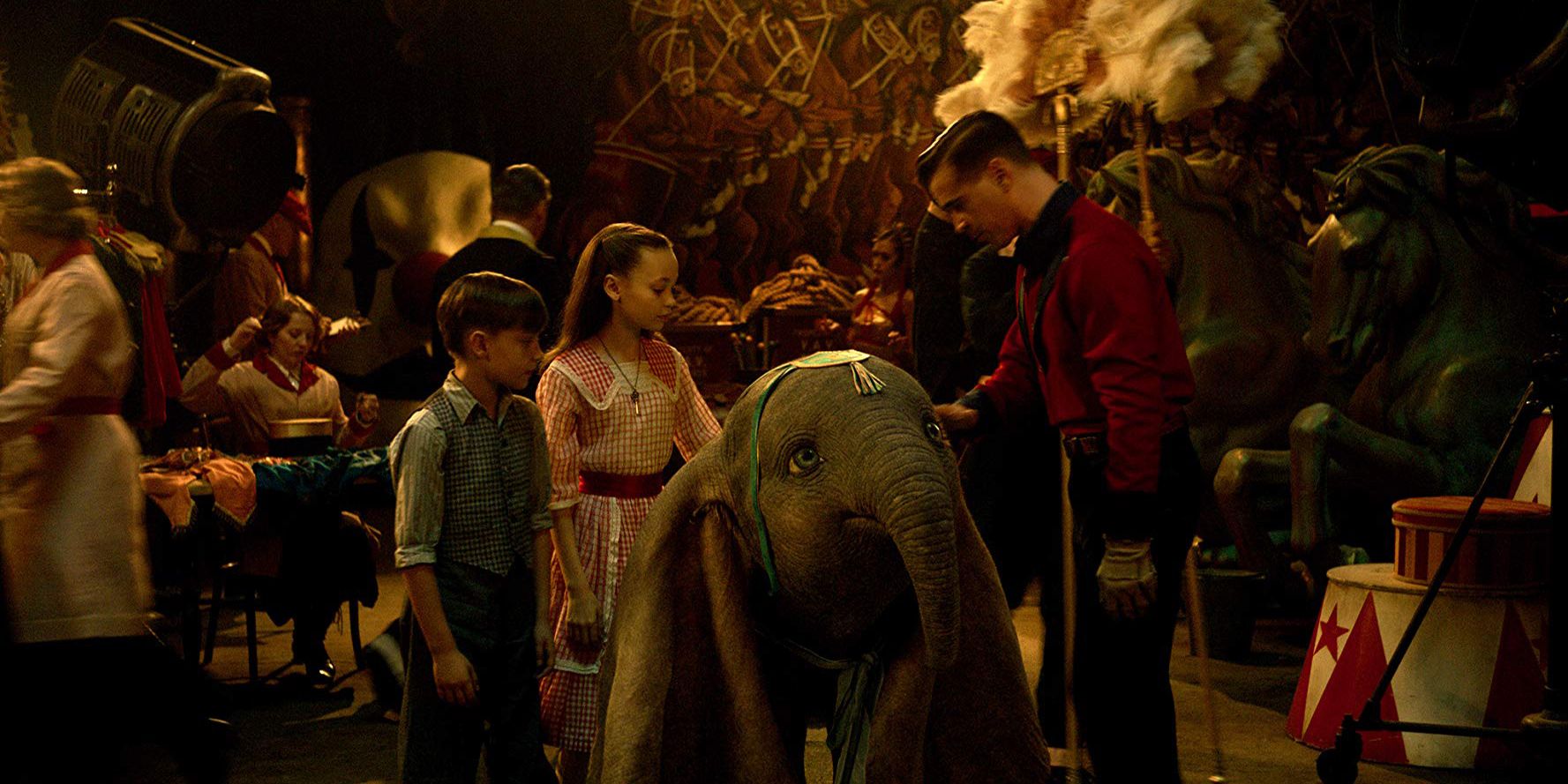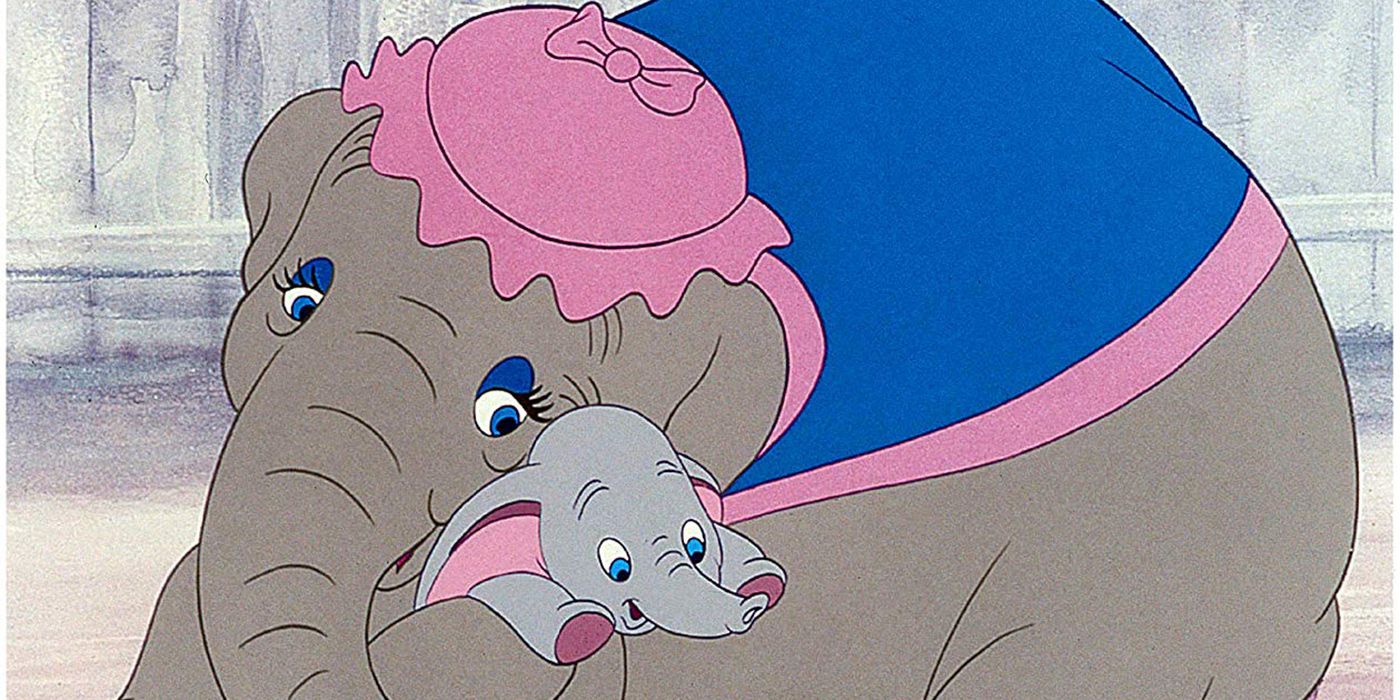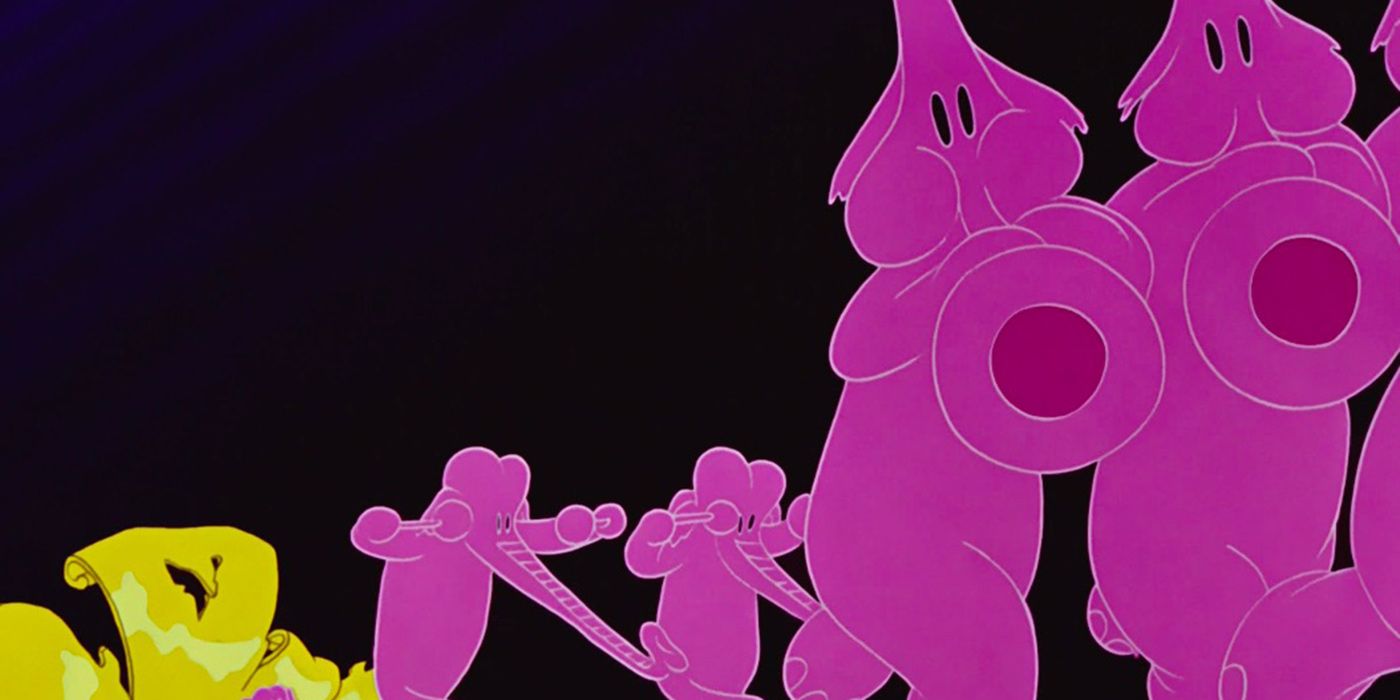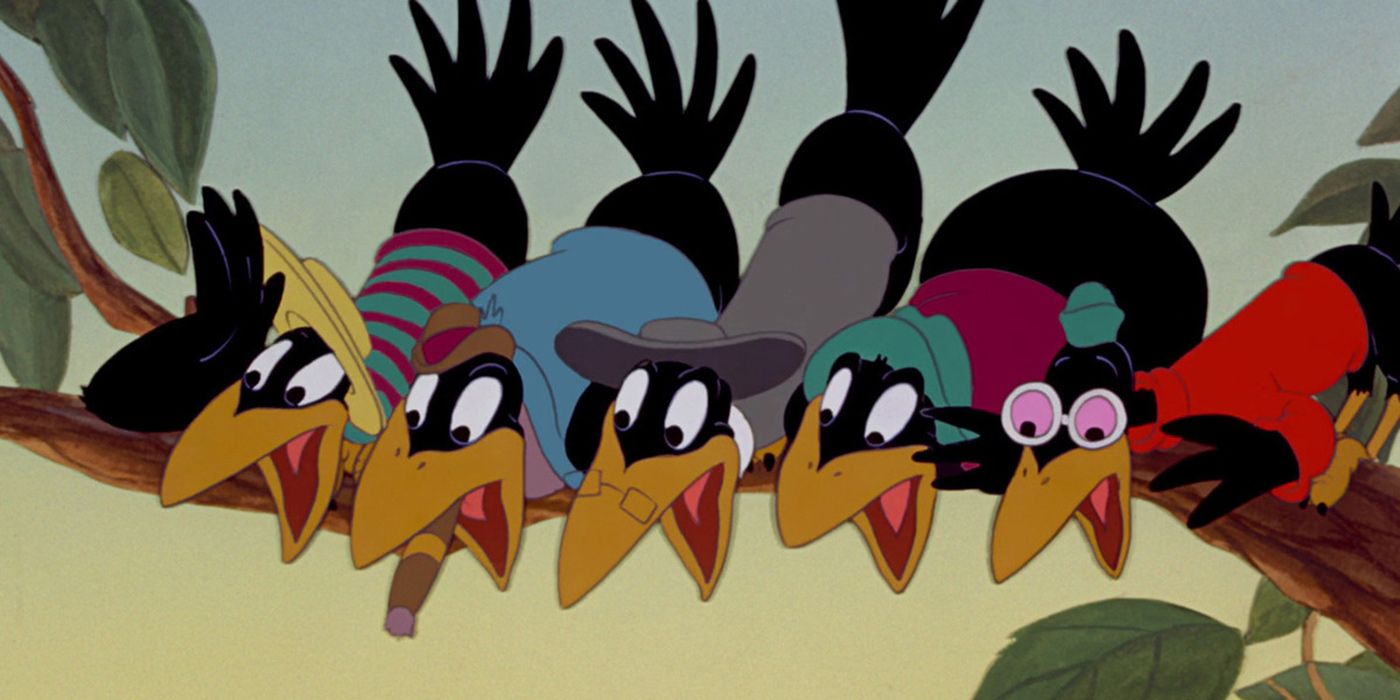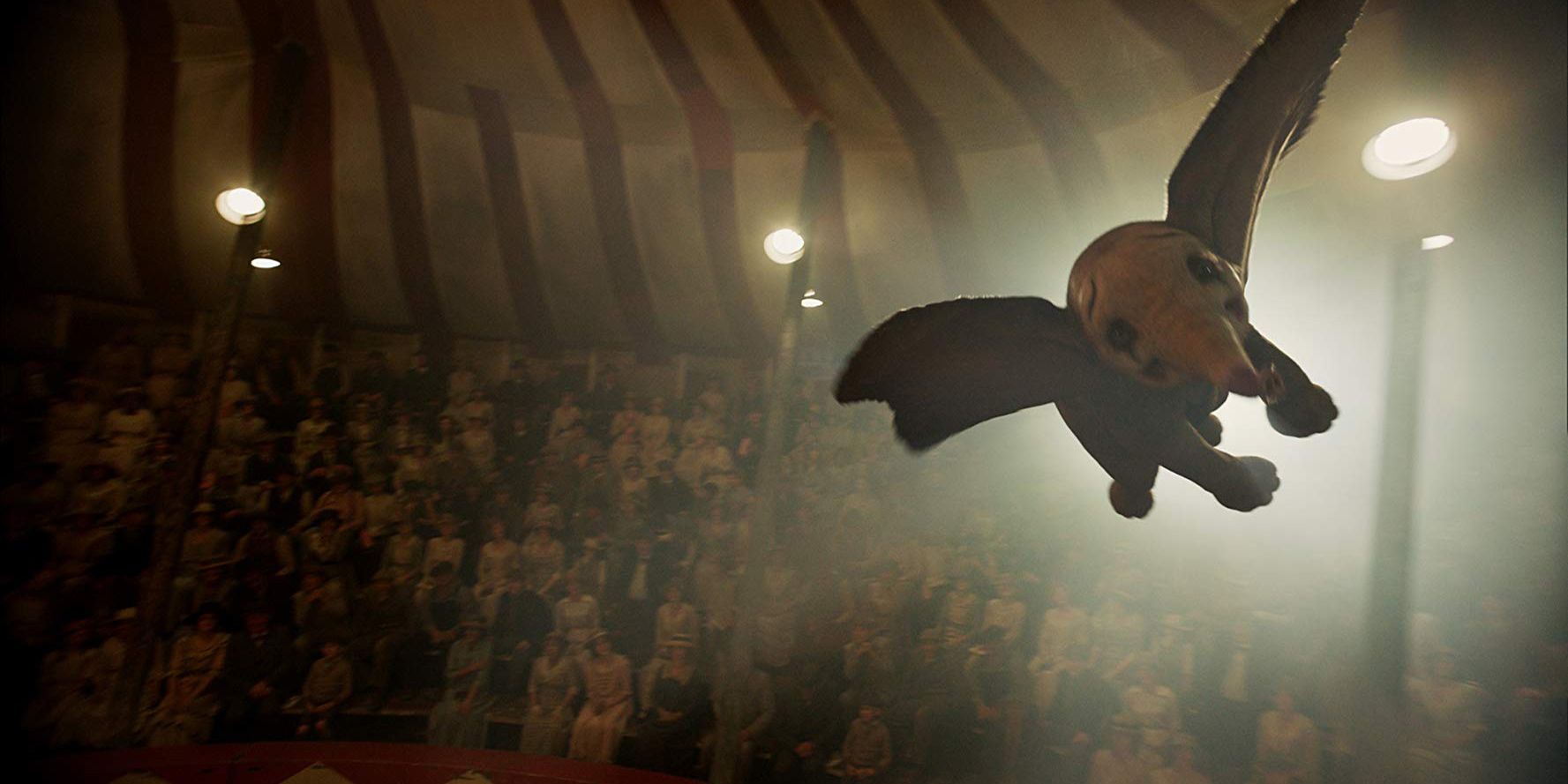WARNING: The following contains minor spoilers for Disney's Dumbo, in theaters now.
Dumbo’s the latest in what promises to be a never-ending line of Disney live-action remakes, but this one stands out from the rest because it’s the first remake to diverge this widely from its source material.
Given the original Dumbo was barely over an hour long and featured an extra simplistic storyline to ensure a box office hit to make up for Fantasia’s losses the previous year, it’s not surprising the original story was bolstered a little bit.
If you’re curious what to expect when you head into theaters to see the 20th century version of the world’s most famous flying elephant, here’s a list of the key differences between the original Dumbo and Dumbo 2019.
Humans Talk, Animals Don’t
The biggest difference between the live-action film and the original animated feature is the fact that there are no talking creatures. While the circus animals in Dumbo definitely enjoy more humanity than actual animals, it’s the humans who do the talking.
Dumbo’s story is embellished with human subplots to fill out what was a 64-minute movie in 1941, which means the necessity for a talking sidekick or villains disappears. In its place, the Ferrier family and Max Medici’s storylines are introduced. Colin Farrell plays Holt Ferrier, a WWI vet returning home to Milly and Joe (Nico Parker and Finely Hobbins), two children he’s ill-equipped to manage, and Danny DeVito's Max Medici faces the loss of his business without some kind of key act to get audiences interested again.
RELATED: Dumbo Projected to Score a Small (By Disney Standards) Opening Weekend Haul
The new additions to the story serve to fill everything out a little more, but ironically, the still speechless baby elephant is more compelling than literally every human on screen. That’s not to say the Ferrier, Medici and the circus storylines aren’t interesting, it’s just that we defy you to be more interested in them than in a baby getting reunited with its mom.
Mrs. Jumbo, Um, Kills Someone
In the original feature, Dumbo’s mother attacks a human child after he makes fun of her baby. She’s then deemed a “mad elephant” and put in solitary confinement. After her imprisonment, Dumbo is without any real protection, and the spiteful female elephants that made fun of him when he arrived by stork victimize him even further. That’s part of what leads him to seek out his mother’s comfort in her cell, where we first hear the iconic “Baby Mine.” The 2019 film interprets her… differently.
Instead of being a largely passive, despondent character, Burton’s Mrs. Jumbo is a force to be reckoned with from minute one. She’s difficult to control at first because she’s pregnant, then because she observes Dumbo being mistreated. Her major outburst still occurs after audience members ridicule her babe, driving her mad. She breaks the central beam supporting the big top, and when it collapses, it falls on a particularly cruel circus worker, killing him.
RELATED: Dumbo's Rotten Tomatoes Score Fails to Take Flight
It’s a brutal moment that feels a little out of place in a Disney film, but the character is so egregious no one mourns him for long. Unfortunately, it does result in Medici selling Mrs. Jumbo because there’s no way he can subsequently use her. It’s an example of Disney’s immortal kill-your-moms trope, but executed in a particularly gruesome way.
NEXT PAGE: You Still Get Your Pink Elephants, But Differently
No Animals Got Drunk During the Making of This Movie
In an hilariously contrived way to arrive at Dumbo’s accidental discovery of his ability to fly, he and Timothy Q. Mouse accidentally get blasted on champagne that drunken clowns dropped into a water trough. Cartoons getting drunk was far more common then than it was now, and the scene is innocent enough that it stands the test of time. It also serves as the segue into Dumbo’s famed "Pink Elephants on Parade" number.
“Seeing pink elephants” is an old euphemism for experiencing hallucinations as a result of alcohol intoxication at best, and actual delirium tremens at worst (there’s actually a beer named Delirium Tremens that features pink elephants on its logo). Given that context, it’s not surprising neither the sequence nor its precipitating event made it into the remake. But that’s not to say pink elephants don't make an appearance.
Instead of drinking underage and tripping out, Dumbo sees pink elephants before his first show at Vandevere’s Dreamland theme park. There he observes an act involving expert bubble blowers who create pink, elephant-shaped bubbles that morph and twist just as his hallucinations did in the original. It’s a callback that’s considerably less disturbing than the original, but still beautiful and mesmerizing in its own, more innocent way.
No Racist Crows!
The 1941 film featured Jim Crow, the leader of a group of crows that help Dumbo learn how to fly after he ends up in their tree following his drunken flight. The name alone should tell you what stereotypes the crows played into and why nothing resembling them wound up in Burton’s adaptation. Instead, this Dumbo has very little in the way of anthropomorphic guidance.
Timothy Q. Mouse makes an appearance (uniform and all), as does Casey the Engine, but neither of them are given the power of speech. Instead, it falls to Colt Ferrier’s children and Eva Green’s Collette Marchant to give Dumbo the confidence and coaching he needs to fly. The crows do have a spiritual presence, though.
REVIEW: Dumbo Is Disney's Most Original Live-Action Remake Yet
The way Dumbo’s ability to fly first manifests is after he snorts up a feather and sneezes himself off the ground. His ears immediately start flapping and the Ferrier children watch as he floats for a few seconds. Subsequently, a feather becomes an essential part of his act until he’s forced to act without it, just as in the original.
Dumbo Flies Earlier and More Often
The climax of the original animated feature is Dumbo’s first flight. He ascends a flaming tower surrounded by firefighting clowns and dives straight down, only to catch air at the very last second, avoiding certain death for himself and Timothy. That movie’s only an hour long -- a very special television episode from a modern perspective -- so it caps off the action and Dumbo’s journey perfectly.
Dumbo 2019 gets to the money shot a little earlier. Colin Ferrier’s tasked with making something out of the baby elephant after his mother, Mrs. Jumbo, has to be sold because she’s too dangerous to keep performing (stop making fun of her kid and maybe she wouldn’t be so dangerous). His children comfort the elephant after Mrs. Jumbo’s departure and soon discover he has a latent talent. They start training him in earnest and, before long, he’s soaring under Medici’s big top, attracting headlines and the attention of Michael Keaton’s V.A. Vandevere.
The addition of another human subplot and 45 extra minutes of movie leave a lot of room to watch the talented pachyderm showcase his special talent. Considering the CGI creation is more of the heart and soul of this film than his living, breathing counterparts, this is a very good thing.

